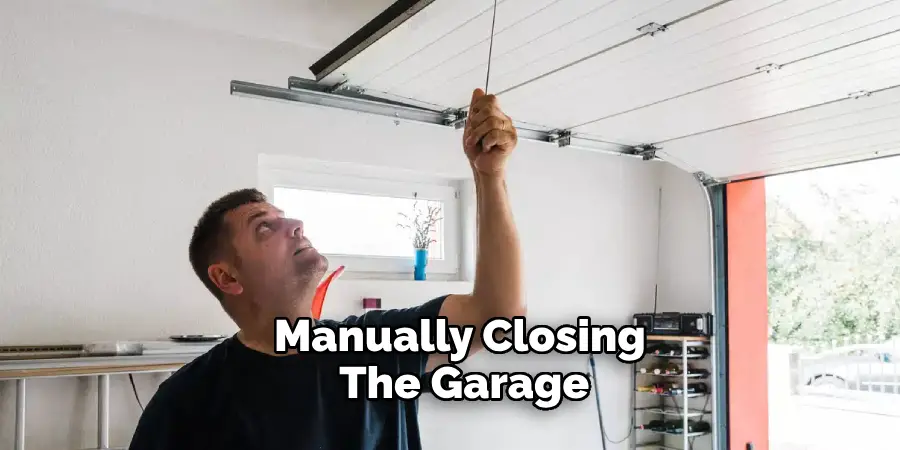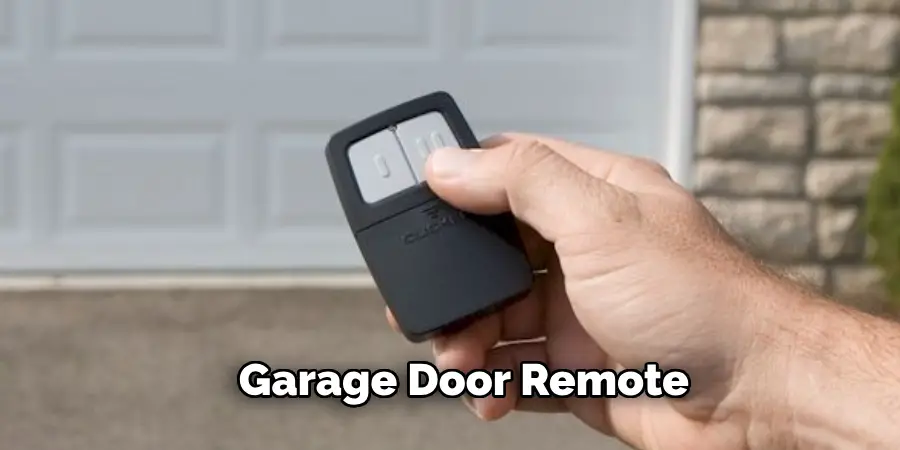Reconnecting a garage door opener after a manual disconnection, power outage, or malfunction is crucial for ensuring your garage door’s smooth and secure operation.

Without proper reconnection, the door may become inoperable or pose safety risks.
This article provides essential guidance on how to reconnect my garage door opener effectively, enabling you to restore convenience and security to your home. The process begins with identifying the reason for disconnection, such as using the emergency release or experiencing a power failure.
Following this, you will learn to manually reengage the trolley and activate the opener through remote or wall controls. Finally, we will cover important testing procedures to confirm the door’s functionality and troubleshoot any issues. Following these steps ensures your garage door operates correctly and reliably, giving you peace of mind.
Understanding Why the Opener is Disconnected

Garage door openers can become disconnected for several reasons, the most common being manual disconnection through the emergency release cord. This cord is designed to allow users to operate the garage door manually in cases of power failure or for maintenance purposes.
When pulled, this cord disengages the door from the opener, enabling manual operation and preventing potential damage during emergencies.
In addition to manual disconnection, power outages and technical malfunctions can also cause the opener to become disconnected. Power outages can disrupt the opener’s functionality, necessitating reconnection once the power is restored.
Furthermore, tripped circuit breakers or system faults may cause the opener to reset, leading to disconnection from the garage door. Understanding these potential issues is vital for effective troubleshooting and ensures a seamless reconnection process.
Safety Precautions Before Reconnecting
Before attempting to reconnect your garage door opener, ensuring a safe environment is essential.
Ensure the Door is Closed

Always start by manually closing the garage door completely before engaging the opener. This crucial step helps prevent potential damage to the door and the opener and reduces the risk of injury to yourself or others. A closed door also ensures that the opener can function correctly without obstructions once reconnected.
Check for Obstructions
Thoroughly inspect the garage door tracks and the surrounding area for any obstructions that could interfere with the reconnection process. Look for debris, tools, or toys that may be in the way. Clearing these obstacles not only facilitates a smoother reconnection but also helps ensure safe operation when the door is opened and closed in the future.
How to Reconnect My Garage Door Opener: Reconnecting the Garage Door Opener Manually
Locate the Emergency Release Cord

To begin the manual reconnection of your garage door opener, first locate the emergency release cord, which is typically a red handle hanging from the trolley. This cord is designed for emergency use and allows you to disengage the garage door from the opener, facilitating manual operation. To use it, simply pull the cord downwards, releasing the door from the opener mechanism and enabling you to operate the door manually if necessary.
Reengage the Trolley
Once the door is manually operated, it’s time to reengage the trolley. Start by carefully pulling the emergency release cord towards the garage door. Once the cord is taut, gently lift or lower the door until the trolley reconnects with the opener’s carriage. You may need to move the door slightly to ensure the trolley aligns correctly with the opener.
As you adjust the door, listen for a distinct click sound; this indicates that the connection is secure and the trolley is properly reengaged with the opener. If you don’t hear the click, adjust the door until you achieve a solid reconnection. It’s crucial to ensure the trolley is fully reattached to avoid future issues.
Testing Manual Operation
After reengaging the trolley, it’s essential to test the door’s manual operation before restoring power to the opener. Gently lift the door to ensure it moves smoothly along the tracks. Watch for any resistance or sticking that could indicate misalignment or obstruction. If the door operates seamlessly, you can confidently reconnect the opener, knowing that your garage door is in good working condition.
How to Reconnect My Garage Door Opener Reconnecting the Opener Automatically
Activate the Opener

To reconnect your garage door opener automatically, start by ensuring the door is fully closed. Next, grab your garage door remote or approach the wall-mounted control panel. Press the designated button to activate the opener. As you do this, the opener will receive a signal to begin its operation.
The opener’s motor should engage, and the trolley will automatically reengage with the door as it starts to lift.
An important factor here is the presence of the door in a closed position, as this allows the opener to align and connect correctly with the trolley mechanism. If successful, you should hear a distinct sound indicating the re-engagement. If the door does not open, recheck the initial connections and ensure power is restored to the opener.
Test the Opener
Once the opener has been activated, testing its functionality is crucial. Start by using the remote or wall-mounted control to open the garage door. Watch closely as the door ascends, ensuring it operates smoothly and without hesitation along the tracks. To further evaluate the system, close the door again using the same control device.

During both operations, listen carefully for any unusual noises, such as grinding, clicking, or slowing movements, that might suggest an issue with the door’s alignment or the opener’s mechanics. Should any irregularities arise, it may be necessary to manually check that all components, including sensors and tracks, are correctly positioned and free from obstructions. A smooth opening and closing door indicates a successful automatic reconnection.
Adjust the Limits and Force Settings
After reconnection, adjusting your garage door opener’s limits and force settings may be necessary for optimal operation. Begin by locating the adjustment screws or controls, which are typically found on the motor unit. Set the travel limits so the door opens and closes fully without reversing mid-operation. To do this, press and hold the button to open the door fully, then find the limit adjustment screw and turn it appropriately until the door stops when it’s fully raised. Repeat this for the closed position to ensure it doesn’t close completely down.
Then, adjust the force settings to determine how much lifting power is required to open and close the door effectively. It is recommended to start with a lower force setting and increase gradually until you find a balance that allows the door to operate smoothly without requiring excessive effort. Remember that these settings might need further fine-tuning after the initial reconnection to ensure consistent and safe operation.
Troubleshooting Common Issues During Reconnection
Opener Fails to Reconnect
Several issues could be at play if your garage door opener fails to reconnect. A common problem is a misaligned trolley, which can prevent the opener from engaging correctly with the garage door.
First, inspect the trolley to ensure it’s properly aligned with the door’s mechanism. If the trolley appears misaligned, manually adjust it by gently moving the door until it aligns correctly. Additionally, check the power source; a disconnected or tripped circuit breaker could also be the culprit.
Resetting the opener may also help—unplug it for a minute and then plug it back in. Once power is restored, try activating the opener again. If it continues to fail, consider consulting the owner’s manual for further troubleshooting guidance specific to your model.
Door Doesn’t Close or Open Fully
If your garage door doesn’t fully close or open after reconnection, the travel limits on the opener may need adjustment. Travel limits define how far the door lifts and lowers, so improper settings can cause incomplete movement. Start by consulting the opener’s manual for specific instructions on adjusting the travel limits, as different models may have varying processes. Usually, there are adjustment screws located on the motor unit.
To address the limits, open the door fully, press and hold the button, and adjust the limit screw until you achieve full open height. Repeat the door’s closing process, ensuring it stops just above the ground without slamming shut. After adjustments, it’s wise to test the door several times to verify that it operates smoothly through the entire cycle. Make any further tweaks as necessary to ensure consistent and safe operation.
Resetting the Garage Door Opener
Perform a Full Reset
To fully reset your garage door opener, consult the manufacturer’s guidelines, as the process may vary by model. Typically, this involves disconnecting the power supply by unplugging the unit or turning off the circuit breaker. After a brief pause, restore power while pressing the motor unit’s reset button. This action can resolve persistent issues arising after reconnection, such as unresponsive controls or failure to open or close properly.
Reprogramming Remotes and Keypads
After completing a full reset, you must reprogram your remotes and keypads to ensure they communicate effectively with the reconnected opener. Start by locating the “learn” or “program” button on the opener unit.
Press this button until the indicator light flashes, then promptly press the button on your remote or keypad that you wish to program. Repeat this step for each remote and keypad, ensuring all devices sync correctly with the opener for seamless operation.
Preventative Maintenance Tips
Regularly Inspect the Opener and Tracks
To ensure the longevity of your garage door opener and prevent future disconnections, it’s essential to regularly inspect both the opener and the tracks. Look for signs of wear, misalignment, or debris that could impede smooth operation. Lubricate moving parts according to the manufacturer’s recommendations and keep the tracks clean to facilitate unobstructed movement. A well-maintained system reduces the risk of malfunction and enhances overall performance.
Check the Emergency Release Cord
Periodically checking the emergency release cord is vital for safety and functionality. Ensure that the cord is operational and not frayed or damaged, as a compromised cord can hinder your ability to manually operate the door in emergencies. If any issues are found, replace the cord immediately to maintain confidence in the door’s emergency functions.
Conclusion
In summary, learning how to reconnect my garage door opener involves several crucial steps, including manually re-engaging the trolley, testing functionality, and troubleshooting common issues. Remember to perform routine inspections and maintenance, which will help prevent disconnections and promote the safe operation of your garage door system.
Pay special attention to both the opener and the tracks, and don’t neglect the emergency release cord for optimal safety. By following these guidelines closely and performing consistent maintenance, you can ensure that your garage door remains both convenient and secure.
Reconnecting a garage door opener is a straightforward process that, when done correctly, can restore peace of mind and enhance the functionality of your home.
I am Rick. I grew up helping my dad with his handyman service. I learned a lot from him about how to fix things, and also about how to work hard and take care of business. These days, I’m still into fixing things- only now, I’m doing it for a living.
I’m always looking for new ways to help people grow and develop. That’s why I have created this blog to share all my experience and knowledge so
that I can help people who are interested in DIY repair.

